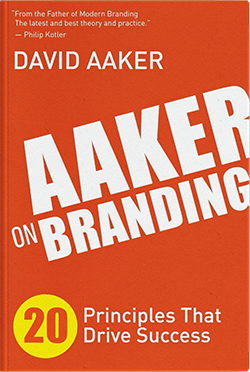BLOG
The Importance of Category Labels
Don’t accept a minor role in a fixed category. Start a new one and become its star.
I’ve stated many times before that the only way to grow, with some exceptions, is to innovate and create “must-haves” that define a new subcategory (or category) and then manage that subcategory so that it wins in the marketplace and so that your brand becomes an exemplar. When this happens, subcategory competition becomes the focus rather than brand competition, and this can be a foreign concept to most marketers.
Subcategory/ Category Labels
A key part of the process is the subcategory or category label or “brand.” The brand that can define and manage the label will be in a position to both help the subcategory win and become its exemplar. A recent article in the Sloan Management Review provides insight into the importance and dynamics of category labels based on a study of several categories. They observed that categories usually start with multiple labels before a dominant category label emerges. Premature labels exit because the category technology changes over time.
The “credit card” label, which describes cards sponsored by banks, was preceded by “charge cards” and “charge-a-plate” as the technology changed over some 30 years. Sometimes, early efforts to describe the category emphasize different aspects and become obsolete as the category evolves.
So “smartphones” were variously called a “camera phone,” “game deck,” or “PDA.” Sometimes the early labels just aren’t very good. Snowboards were first called Snurfers. There is a fine line between a brand like Telsa creating a subcategory label and being an exemplar for a category that is not defined by any label but by a set of characteristics that may be a half dozen or more in number.
“The only way to grow, with some exceptions, is to innovate and create “must-haves” that define a new subcategory.”
Creating a label means that the brand has more control over the subcategory. A brand that aspires to be the category leader should make an effort to be the brand that introduces the dominant label, or identifies it early and becomes its exemplar. The goal is to infuse the category with the characteristics on which the brand is strong so that the brand can obtain exemplar status. Think of stories like Burton, who created the Snowboard label and proceeded to imbue it with characteristics that the Burton board excelled at.
Parity with Defining Characteristics of the Category
A late mover needs to conform to the label and demonstrate parity with respect to the defining characteristics of the category. The assumption is that the category, when defined by a dominant label, is unlikely to change in any brand idiosyncratic way. In overlaying my ideas onto the research stated in the article, I would make the following observations.
- While category dynamics are important, there is actually more action in subcategories because they occur more frequently. So instead of accepting a fixed category and striving to become relevant, a latecomer should try to innovate and add a new “must-have” to the category thereby creating a subcategory for which the brand can dominate.
- The concept of reliance helps the dynamics with respect to subcategory (and category) competition. A goal of category or subcategory creation is to make all other options irrelevant. Competitive brands lose not just because they are not preferred, but rather because they are not considered. One objective of the dominant brand is to manage the subcategory definition over time, changing or adding “must-haves” so that it’s harder for competitors to stay relevant. They are always on the defense fighting a relevance challenge.
- There are times when the label of a subcategory (or category) is the brand itself. Xerox represents copy machines, and Google represents search engines. People “Xerox reports” and “Google it.” Tesla competes in the “electric vehicle” category but because of its set of “must-haves” it really defines a subcategory of which it is the only member. It thus achieves the ultimate goal of subcategory-based competition—forming a subcategory in which all competitors are irrelevant.
- There are times in which a subcategory gets a very descriptive label such as “low fat” or “organic” food. The exemplar brand often gets to define the subcategory. Making it complex can mean the customer might have a hard time understanding and recalling the boundaries. However, it also means that competitors will have a hard time becoming a relevant player. I have suggested elsewhere that subcategory (and category) competition can be more important than brand competition. The ability to develop and control good labels is part of the process.
For more on my thoughts of the topic, see my books Brand Relevance and Aaker on Branding.
FINAL THOUGHTS
To achieve uncommon growth, define a new subcategory (or category). Managed well, it becomes an exemplar–with your brand as the clear winner.



